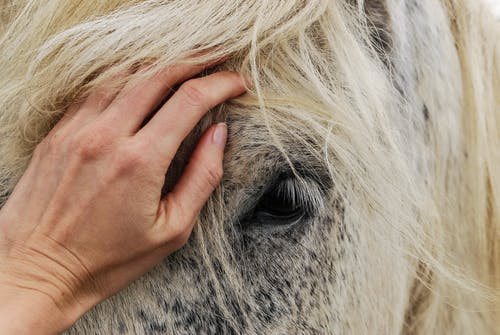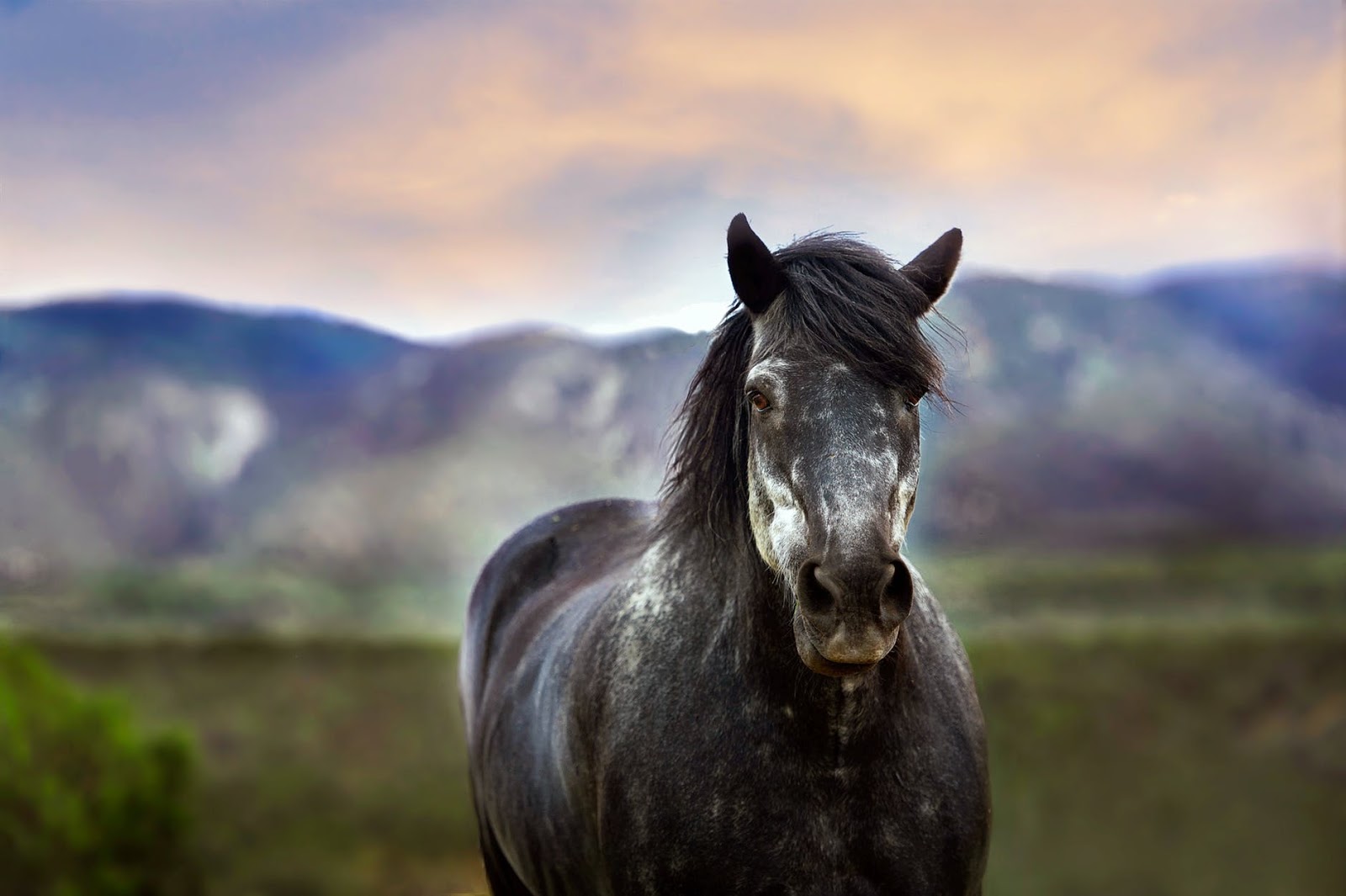How Do Horses Communicate?
passion
August 23, 2019
Horses communicate in many ways, including visual displays, sounds and even through smell (Heird, 1998). Understanding how a horse communicates is important to the 4-H Horse Project member for three important reasons:
1. Diagnosis of medical problems - Learning how a horse behaves when it is sick is important not only so you will know it needs attention, but also because certain behaviors are linked with specific problems. Naturally, a veterinarian or other experienced person may need to be called upon for more detailed information, but it is never too soon for a young person to start learning to tell the difference between normal, healthy behavior and the behavior of sick animals.
2. Assessment of Emotional State or Temperament - As your experience and skill in assessing horse behavior increases, you will find that you can “read” a horse’s emotional state. This knowledge can be applied when assessing how “friendly”a new or unknown horse is, or it can be used to tell if a horse you ride every day is in an unusual mood or is experiencing emotional difficulty. Sometimes a horse is reacting to the presence of another animal, or it can be related to something as simple as the weather.
3. Safety - Horses usually communicate a warning before they cause harm. Learning the communication signals — ears back, head lowered, teeth bared, turning into a “kicking” position, tail swishing, etc.— that warn of danger are important in avoiding harm. Nervous or “jumpy” behavior can possibly be as dangerous as aggressiveness. Learn to recognize the signals that could result in harm, whether it comes from the horse you are riding or one that is being ridden by someone else in your vicinity.
Learning by Application: Write a short story about something related to horse senses or basic horse behavior that applies to your horse, a horse belonging to a friend or a horse story you have read. If possible, share this experience in a 4-H meeting.
DOMESTICATION AND BEHAVIOR
Horses and humans have been closely associated for a long time. Horses were probably the fourth or fifth species to be domesticated. Man’s best friend, the dog, was the first species to be domesticated, with sheep and goats approximately tied for second in the domestication race. Horses were not far behind, and have proven to be a worthwhile addition to the human-animal family.It is difficult to know exactly when domestication occurred, but domesticated horse remains have been dated to some 6,000 years ago. By 3,000 years ago, the domestic horse had spread to Europe, Asia and North Africa.
It is clear that domestication of the horse is a complicated story about the development of a complex, elegant relationship. Experts have proposed the following stages in the process of domestication of horses:
• Loose ties of animals with man, but no controlled breeding.
• Confinement and breeding in captivity, with separation from wild horses allowing a distinct domestic race to develop.
• Selective breeding by man for certain features with occasional mating to wild forms.
• The gradual intensification of the development of different breeds with desirable economic characteristics.
These steps occurred over thousands of years with the bond between man and horses being gradually strengthened with each generation.
Genetic selection during the process of domestication led to the development of breeds. There is considerable variability in behavioral traits between breeds. For example, certain breeds tend to be more active, while others are more docile. The Thoroughbred, is known as a breed with a strong tendency to be alert, even nervous.
Other breeds, such the Tennessee Walking Horse, are known for being calm. Quarter Horses and Morgans are intelligent, while Shetland ponies are protective. Behavior, as related to the utility of the breed in question, has been selected for as certainly as size, muscling, skeletal structure or speed.
Horses may have behavioral problems, but most of these are preventable or correctable with some understanding of horse behavior. In reality, properly trained horses present few behavioral problems. In fact, horses are so gentle that they are outstanding companions for 4-H youth. Thousands of young people show horses each year with little chance of injury by an aggressive animal.
Most accidents are not due to aggressive horses, but are more likely related to an improper or unusual action by the handler. The large number of young people who ride horses every day is probably the best “proof” of the high degree to which the horse has been domesticated into the human pack/herd.
MATING BEHAVIOR
Behavior is an important aspect of reproduction, and an understanding of the basics of reproductive behavior can lead to management applications that can improve reproductive success. In this segment, the complex behavioral patterns related to mating will be addressed.Puberty
Puberty is the attainment of sexual maturity. In fillies, this can be as early as nine or 10 months, but is usually 12 to 15 months. Stallions are 15 months or older before they can successfully breed. Behaviorists have noted that both stallions and fillies (less frequently) may exhibit sexual display before the reproductive tract is physiologically mature. Therefore, pregnancy cannot occur. Conversely, some fillies may cycle, but not exhibit estrus.
Estrus (Heat)
Estrus, or heat, is the period of the reproductive cycle when the mare ovulates and, if bred, is likely to conceive. A behaviorist would define estrus as the “behavioral state when the female seeks and accepts the male.”
The average length of the estrus cycle, or the period from heat to heat, is 21 days, but can vary from 19 to 26 days. The duration of the estrus period is typically a week (actually about 6 days), but varies from two to 10 days. The foal heat, or postpartum estrus, typically occurs six to nine days after foaling, but may be as early as five days or as late as 15.
It is important for the mare owner to recognize the behavioral signs of estrus. Some signs are general, including restlessness, hyperactivity, less time devoted to eating and resting and more time 12 “running the fences.” Other signs, such as frequent urination, straddling (squatting) posture and clitoral “winking” are more specific and are often not as obvious in early stages of estrus.
Some mares are more likely than others to exhibit overt signs of estrus. Older and more experienced mares are more likely to exhibit clear signs of estrus. Maiden mares are considerably more likely to cycle without visible signs of heat.
The presence of stallions increases the behavioral display of estrus in mares. People who keep only one or a few mares often have difficulty in identifying the onset of estrus. Sometimes such small operations may benefit from having a single stallion (sometimes a pony is preferred) around as a “teaser,” to stimulate estrus display. The use of a teaser stallion in larger breeding operations is routine to stimulate mares into a receptive state before the introduction of the breeding stallion.
Seasonal Breeding Behavior
Horses exhibit seasonal breeding patterns. In general, they are referred to as “long-day breeders,” because as the days increase in length in the spring, they come into heat. Mares are also called “seasonally polyestrous” because they have multiple cycling periods. The most likely breeding season for horses is the spring or summer. Since light is a factor in controlling the seasonal breeding pattern, horses are sometimes called “increasing-light” breeders. Most studies have indicated a tendency toward anestrus (not cycling) in the winter months; however, some mares may cycle during this time as well.
Courtship and Mating
Mares will cycle several times during the breeding season if they are not bred or if they fail to become pregnant. The heat period (mentioned previously) is about a week, but the most intense estrus behavior, when the mare is most sexually receptive to the stallion, is about three days.
Mares in heat may actively seek out and attempt to stay in the vicinity of the stallions. There may be few other signs of estrus early in the heat period. As the heat period progresses, the mare may become more active in her courtship behavior. During the peak of estrus, the mare may sniff, lick or nuzzle the stallion. A mare in heat is likely to urinate frequently, particularly if a stallion is investigating. She is also likely to raise her tail and assume a breeding stance. A mare may exhibit the urination response to the stallion whether she is in heat or not; however, if she is not in heat, she will usually leave the vicinity of the stallion or turn on him with threat behavior. If she is in heat, she may passively accept the attention of the stallion, occasionally turning her head to observe the stallion’s activities. The classic behavioral display of the stallion when it “checks” a mare is to lift its nose into air and curl its upper lip. This is called the “Flehmen” response.
Stallions exhibit certain additional stereotypical display patterns. They will often be impatient, alert, hyperactive and restless. Vocalization is common. The stallion will frequently nudge the mare, apparently to signal readiness and to assess her “firm stance” response. In addition to nudges, some stallions may smell and bite over the mare’s body. Most behaviorists consider the display as being more important in the courtship process than odor recognition.
Dominance Effects
Dominance patterns are very much a part of horse breeding behavior, particularly in natural environments. One stallion will typically dominate the breeding of a band of mares and competing stallions will be banished to form their own separate band — until one of them become old enough, brave enough or tough enough to defeat the dominant stallion.
In modern breeding establishments with numerous, separately stalled breeding stallions, all the stallions are used for breeding. Dominance, nevertheless is in evidence. Most breeding barn managers can tell you which stallion is dominant or “the boss.”
Libido
Libido is the term which is used to denote sexual drive or the degree of sexual urge of animals. A stallion with a high libido will exhibit an eagerness to mount and attempt to breed a mare. In natural situations, stallions exhibit a wide range of libido levels, from zero activity to the extremely aggressive stallion who sacrifices all other pursuits in favor of searching for and breeding estrus females. Either extreme may cause problems, and young stallions are more likely to exhibit extremely low or high libido.
Older stallions are likely to decrease the intensity of sexual display behavior, but are often more efficient in mating. Impotence is frequently observed in older stallions, but may be caused by factors other than age (such as injury).
Learning by Application: Write a short story about something related to this section that applies to your horse, a horse belonging to a friend or a horse story you have read. If possible, share this experience in a 4-H meeting.
How Do Horses Communicate?
 Reviewed by passion
on
August 23, 2019
Rating:
Reviewed by passion
on
August 23, 2019
Rating:
 Reviewed by passion
on
August 23, 2019
Rating:
Reviewed by passion
on
August 23, 2019
Rating:


















